Lesson Description
This lesson introduces learners to the role fungi serve as food for other creatures in nature. Learners will be collecting wild mushrooms and dissecting them to search for signs of bugs or other fungi that may be eating the mushroom.
Associated Standards
|
K-2
CCSS.ELA-LITERACY.SL.2.2 Recount or describe key ideas or details from a text read aloud or information presented orally or through other media. CCSS.ELA-LITERACY.SL.2.3 Ask and answer questions about what a speaker says in order to clarify comprehension, gather additional information, or deepen understanding of a topic or issue. K-LS1-1 From Molecules to Organisms: Structures and Processes Use observations to describe patterns of what plants and animals (including humans) need to survive. |
3-5
4LS1-1 From Molecules to Organisms: Structures and Processes 5-LS2-1 Ecosystems: Interactions, Energy, and Dynamics Develop a model to describe the movement of matter among plants, animals, decomposers, and the environment. CCSS.ELA-LITERACY.SL.3.1 (also SL.4.1, SL.5.1) Engage effectively in a range of collaborative discussions (one-on-one, in groups, and teacher-led) with diverse partners on grade 3 topics and texts, building on others' ideas and expressing their own clearly. CCSS.ELA-LITERACY.SL.3.3 Ask and answer questions about information from a speaker, offering appropriate elaboration and detail. |
6-8
CCSS.ELA-LITERACY.SL.6.2 Interpret information presented in diverse media and formats (e.g., visually, quantitatively, orally) and explain how it contributes to a topic, text, or issue under study. MS-LS1-4 From Molecules to Organisms: Structures and Processes Use argument based on empirical evidence and scientific reasoning to support an explanation for how characteristic animal behaviors and specialized plant structures affect the probability of successful reproduction of animals and plants respectively. MS-LS2-3 Ecosystems: Interactions, Energy, and Dynamics Develop a model to describe the cycling of matter and flow of energy among living and nonliving parts of an ecosystem. |
Essential Questions
|
Enduring Understandings
|
Learning Objectives
|
Materials
- Paper, notebook, or journal
- Writing utensils
- Magnifying glass or loupe; a microscope is an awesome addition, though not necessary
- Petri dish, transparent cup or bowl
- Water or alcohol
- Tweezers/forceps
- Newspaper or paper table cloth
- Towels/Paper towels
Lesson Instructions
- Background:
- Scientists categorize animals, including insects, into various categories based on what they eat. Animals that eat meat are called carnivores. Animals that eat plants are called herbivores. Animals that eat both plants and animals are called omnivores. But there is another category of "eater" that often gets forgotten - fungivores! Other organisms use mushrooms for a number of purposes. Some organisms, such as insects, or even other fungi, will feed on mushrooms. Organisms that eat fungi are called fungivores! Common examples of fungivores include slugs, snails, ants, flies, springtails, beetles, rodents, birds, and primates! Because fungi generally live by either breaking down dead plants or animals, or by working with plants to collect energy, ultimately all the energy contained in a mushroom comes indirectly from the sun!
- But insects don't just use mushrooms as food. Some insects use mushrooms as temporary homes (shelter). Mushrooms that are trumpet shaped often gather water in their caps, which insects, birds, and rodents use to drink. And of course, humans eat edible mushrooms as delectable treats!
- Anticipatory Set
- Watch the following video about carnivores, herbivores, and omnivores: https://www.youtube.com/watch?v=Vh351IICJyA
- Ask learners whether there is anything else that animals might eat besides plants or animals.
- Explain that many animals also eat fungi, and are called fungivores.
- Explain to learners that today they will be examining mushrooms to look for signs of fungivores! And while they are at it, they will also create a hypothesis about other ways animals, particularly insects, might use fungi. Instruct learners that while they dissect their mushrooms, they must pay attention to the different types of animals, or signs of animals (bite marks, slug slime, etc) that they find. If possible they should try to look at their specimens under a magnifying glass or microscope to get a better look. Sometimes fungivores are very small and hard to see with the naked eye.
- Cover all work surfaces with newspaper or paper table cloth.
- Assign learners into small groups and give each group at least five wild mushrooms to examine. Warn learners that mushrooms may contain living insects or other bugs and not to be alarmed. Inform all groups that they have ten minutes to examine their mushrooms and record their findings. They will then have to present their findings to the class, including their hypothesis about other ways animals might use the mushrooms they examined.
- Instruct learners to take at least one of their mushrooms and dip the mushroom in water to see if any bugs come out into the water. For older learners, this could also be done with alcohol which would kill any bugs and make them easier to examine.
- After ten minutes, bring all learners together and ask members of each group to share:
- What did they notice about their mushrooms?
- What different fungivores or signs of fungivores did they find?
- What is their hypothesis for how animals might use mushrooms for other things than food?
- Suggest for homework that learners have their families buy mushrooms from the grocery store and incorporate them into a meal. While eating a mushroom meal together, learners can teach their families about fungivores and how important mushrooms are for the circle of life!
References and Resources
Our lesson plans utilize the backward design model presented by Understanding by Design by Grant Wiggins and Jay McTighe
|
|
|


